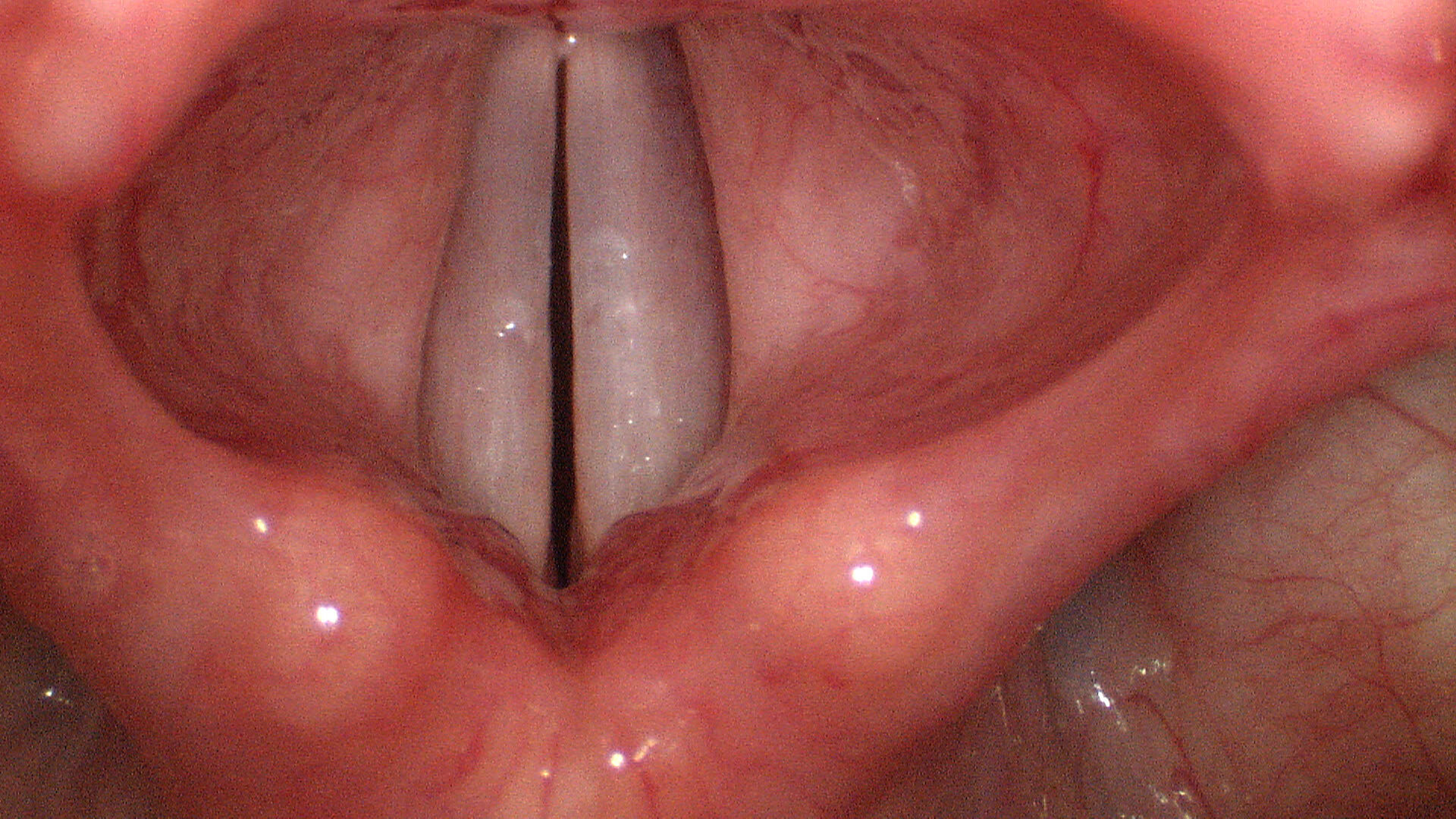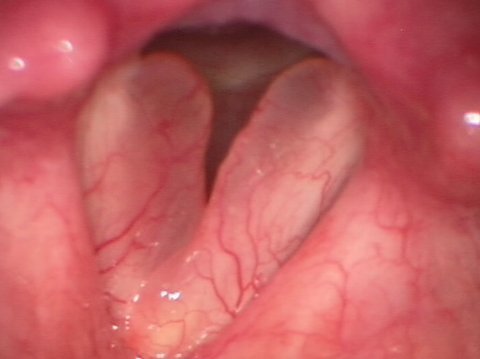What Happened To Miley Cyrus' Voice and What Is Reinke's Edema?
If you have listened to Miley Cyrus’ recent work, you may have noticed that she sounds completely different - her voice is lower and gravelly, very unlike her early Hannah Montana days. People have varying opinions of this new sound, and there are many theories banding around, but what actually caused it?
First of all, let’s listen to the change in Miley’s voice. I’ve put together a few live clips so you can hear the evolution of her voice. In the early years, her voice is much lighter sounding and by 2012 her voice is sounding a little more mature whilst maintaining the same tone. A real shift happens in 2013-14 and then the voice stays relatively similar in 2017. In fact, she sounds very strong in 2017. She develops a huskier edge in more recent clips in 2020.
You can also hear it even more in her speaking voice. Here is a clip of a younger Miley on Jonathan Ross
And here is a recent clip of Miley in an interview with Joe Rogan.
What is Reinke's Edema?
Our vocal cords are tiny bands of tissue located in the larynx in our throat. You can find your larynx by touching your chin and drawing a line down your neck with your finger. You will get a bump. For many men, it is the Adam's Apple for other people, a smaller bump. That is your larynx. When air from our lungs passes through closed vocal cords in the larynx, they vibrate, and we make a sound. If you touch your larynx gently while humming, you can feel that vibration. Our vocal cords are tiny, between 1.25cm and 2.5cm in length. Although they are small, they are made up of layers of different tissue types. Here I am showing you a cross-section of vocal cords you can muscle on the inner layer, two layers of ligament and a gelatinous layer called Reinke’s Space and a kind of outer skin called the epithelium. The fluidity of the gelatinous layer allows the vocal cords to vibrate.
This layer was discovered by a very clever German Antominst called Friedrich B. Reinke in 1895. Hence this layer often gets called Reinke’s space. However, its official name is the Superficial Lamina Propria. When you have Reinke’s Edema, it means that fluid builds up in this layer, it swells.
Let’s have a look at some healthy vocal cords. You can see those white bands of tissue, those are the vocal cords.
Here are vocal cords with Reinke’s Edema. You can see how the cords are much bigger, translucent and bowed in shape. But there is more going on with this. Accumulation of fluid within Reinke's space makes it less stiff and even more gelatinous. The size and change in elasticity mean the vocal cords vibrate more slowly, and the voice lowers.
But why does it make the voice sound gravelly?
When vocal cords are healthy, they can come together fully and vibrate evenly. We hear these even vibrations as a clean sound. A distorted sound happens when the vibrations are irregular.
So, the characteristic gravelly sound can be caused by a few features of the Edema.
The inability to close the vocal cords fully allows air to leak through, making it sound breathy
The vocal cords uneven shape and size cause irregular vibrations, distorting the tone.
Sufferers bodies will often also use the false or vestibular vocal folds in voice production rather than just the true vocal cord. These are tissue above the vocal cords that are usually used to protect the vocal cords or in extreme vocal techniques like Death Growls.
As you heard Miley’s voice slowly changed over the years and symptoms of Reinke’s Edema are generally a gradual build. Let’s recap what they could include, they may include:
Gravelly sounding voice
Breathy voice
Low pitched voice
Reduced pitch range
Difficulty with increasing loudness effectively
Effortful voicing
Vocal fatigue
Loss of vocal control
The sensation of airway disturbance
And, in the extreme, the swelling can be large enough to impair breathing.
Many people love Miley's new found gravelly texture and the dramatic low notes. However, although this can sound cool, it is important to note that it comes with many downsides. One of which was a need to get vocal surgery to be able to continue performing.
What Causes Reinkes EdemA?
Vocal Abuse
The first point Miley makes in her her interview with Joe Rogan is that no one shy ever has this. It is for abuse of the voice. She is right. One of the leading causes is vocal abuse, whether it is from speaking, shouting or singing. That means pushing your voice past its limit, talking or singing on it when it is hoarse and not training and singing or speaking with good technique. And she is also correct. It is unusual for someone so young to have this. It normally develops with consistent vocal abuse over a long time.
Singing Technique
clips, I have seen she seems to sing in a reasonably healthy way throughout her career, if a little forceful. However, that is part of her style. She puts emotion above everything in her performance, and of course, that is amazing to watch and something I couldn’t imagine her without. This way of singing can be sustainable for some people, not everyone but it requires you to look after yourself. It’s important to remember that singing is a physical act. You have to be a vocal athlete and Miley’s vocal style was a sport it would be boxing, she’s isn’t playing golf. But if boxers can box, she can sing but to sing like that, you do need to condition yourself like a boxer.
Smoking
However, smoking was almost certainly the main factor. 97% of people with Reinke’s Edema are habitual smokers.
Lifestyle
Miley’s lifestyle would have almost been a factor. Alcohol and drugs make us less aware of how we are using our voice, if it feels healthy or if it hurts and whether we are speaking or singing can mean we push our voice past where we would normally. Anything that makes our body and/or our mind unhealthy also makes our voice unhealthy.
Skipping Rest Days
It isn’t just how you sing, it is when you sing, and much like the rest of the body, your voice is muscles, ligament and nervous system, that needs days off. It is vital to avoid any vocalising while you have a hoarse voice or a tired voice, whether from a night out or illness or tiredness, which is often a luxury top-level singers can’t afford. It is a shame singers, especially younger singers, often get backed into a corner, feeling like they can’t take days off or they will let people down.
Insufficient Vocal Training
Ensuring your singing technique is healthy is very important in avoiding vocal damage and Miley does talk about now taking vocal training seriously. Training and warming up, like an athlete, is essential in keeping your voice healthy over the long term, especially if you have a singing schedule like Miley.
Other Risk Factors
And, of course, other risk factors can contribute. For example, chronic acid reflux or sinusitis and severe underactive thyroid have been cited as a reasonably common cause in sufferers. Anything that can chronically irritate the vocal cords can cause this.
What does this mean for Miley, and how can it be treated?
Well, first of all, she has stopped smoking. It’s very important for anyone suffering from this to identify the thing that could be causing the chronic irritation, so smoking should be the first thing to go for anyone with symptoms. Early or mild edema may improve with stopping smoking alone.
Mileys case was quite severe, so she ended up getting surgery, and she hasn’t talked about the specifics of what this involved. There are different treatments required depending on the case, but the aim of surgery will be to reduce the edema material and bring the vocal cords back to their natural size before the damage. The most common type of surgery for Reinke's Edema today is called surgical Microlaryngoscopy. During surgery, an incision is made into the vocal cord using either microscissors or a laser and the affected tissue is removed. This is a big decision, the surgery can cause scarring on the vocal cords which can cause problems with their movement and therefore vocalisations. In short, your voice is at risk.
If acid reflux or thyroid is the root of the problem, you may have to look further into those illnesses and seek treatment for them. Whether someone has surgery or not, they will most likely have to go to voice therapy to learn how to use their voice healthily.
If you are experiencing any of the symptoms in the UK, you can ask your GP to refer you to an Ear, Nose and Throat specialist or ENT. In other countries, you might have to go straight to them. They will be able to diagnose what is happening and treat it.
Whether due to vocal damage or not, our voice reacts to our experiences, whether tired or stressed or full of joy and if we damage our body and minds, we also damage our voice. There are going to be a contingent of people that watch this and think, but I want a voice like hers and then another on the other side being overly cautious. Her voice may sound cool, but she will have to deal with that vocal damage for the rest of her life and be all the more careful and diligent now, or her voice could give out on her completely. That is scary for any professional singer. Longevity and feeling in control of your voice are essential when you sing for that many people. However, it is also wonderful to hear her make the most of her new voice and its heaviness. You can’t deny that she has lived the things she sings about because it’s scared into her voice, but she also wouldn’t be able to sing with this voice if she hadn’t come out the other side and started treating it and herself well. People often wonder how to get a voice that feels like you have lived, and of course, I would never suggest damage to get you there - the consequences can be massive. Remember that you are already living. Whether you want it or not, your experiences and personality quirks will leave an imprint on your voice and the way you use it. Maybe your voice won’t sound like hers, but it will sound like you and the unique and extraordinary life that you are living.
IF YOU HAVE ANY QUESTIONS PLEASE GET IN TOUCH OR BOOK A SINGING LESSON HERE.
References
Miley Cyrus Interview Joe Rogan: https://www.youtube.com/watch?v=6C-U6rtaKJM&t=1s
Miley Cyrus Talks About Vocal Surgery On Howard Stern: https://www.youtube.com/watch?v=0hmaXdNz9uk
Reinke's Edema: http://www.otolaryngology.pitt.edu/centers-excellence/voice-center/conditions-we-treat/reinkes-edema
Voice Foundation: https://voicefoundation.org/health-science/voice-disorders/voice-disorders/reinkes-edema/1328-2/
Wikipedia: https://en.wikipedia.org/wiki/Reinke%27s_edema
Sean Parkers Institute for Voice: https://voice.weill.cornell.edu/voice-disorders/reinkes-edema




